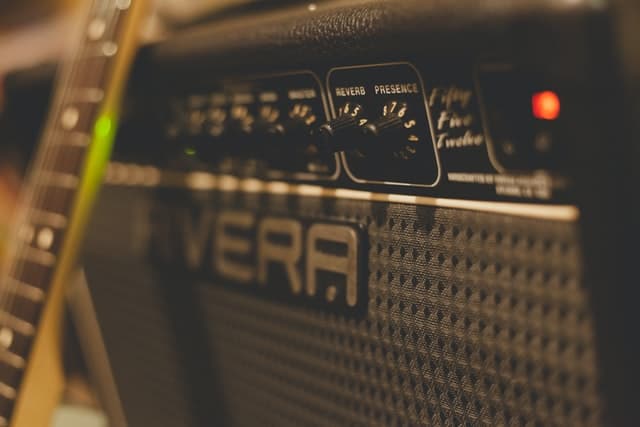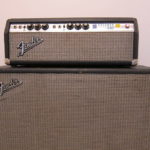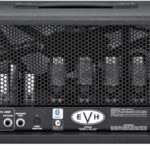Sometimes the control layout on amplifiers is less than self-explanatory. You can turn a knob and hear a difference but what if someone asks what exactly it does?
Music doesn’t always translate well into language and the terms used to describe musical tones can be really weird too: bright, dark, warm, cold. Huh?
Let’s see if we can unravel what is happening when you adjust the depth and presence controls on a tube amp.
Depth and presence controls affect the low and high-end frequencies in tube amplifiers, respectively. But they provide a different use than equalizer controls in the preamp because they are part of the power amp and interact with the negative feedback loop circuit of tube amps.
There are no rules about how amplifier manufacturers can label the controls on their gear. I mean the first generation of Peavey Triple XXX amps labeled the lows, mids, and highs, as bottom, body, and hair.
That seems like a poor joke for a company that is already thought of as being stuck in the eighties and the 2nd generation went back to the traditional naming scheme.
So a company could very well label an extra preamp gain stage as presence or depth but we will aim for the most common meanings. Let’s get into it.
What does the depth knob do on an amp?
The depth knob on a tube amp is a way to boost the low frequencies. Soldano amps have depth knobs but a lot of amps use the term “resonance” for this control by the way.
But you already have an equalizer knob for that right? Well, the depth knob may affect a slightly different range of bottom end but here is the important part; the traditional EQ knobs are part of the preamp whereas the depth knob affects the power amp circuit.
Here is the official version of what the manual for a Soldano SLO-30 says about it:
It “adjusts the amount of low frequencies in the power amp for both normal and overdrive channels.”
But it’s a little more complicated than that description makes it sound and can color your tone when you are overdriving the amp.
What does the presence knob do on an amp?
So while depth/resonance controls affect the low frequencies in the power amp, a presence knob is for the high frequencies.
Again, the frequency range may differ from the highs adjustment in the preamp.
This time let’s get our description from a manual for a Marshall 2203 amp because it gives a little more information about how it affects the tone:
“…in the power amp section of your amp and adds high frequencies to your tone, creating crispness and bite (…) your sound will become more cutting.”
To understand this better we have to dig into what exactly is happening with these controls. In the preamp section, the controls (potentiometers) are variable resistors.
So the natural design of the preamp would be to have all of your EQ knobs at maximum. Therefore when you shape your sound with the EQ in the preamp you are actually removing frequencies from your tone.
Presence and depth knobs interact with something called a negative feedback loop in the power amp.
While the detailed engineering of it is beyond me, I can tell you that its function is to prevent the power amp tubes from distorting too easily by “bleeding off” some voltage.
So the depth and presence controls allow you to feed certain frequencies back to the power amp that would normally be bled off by the design of the amp.
So you are adding to the sound. And when you do that with vacuum tube technology you get a little magic that colors the sound when you are playing the amp to its distortion point.
Do all amps have depth and presence knobs?
These controls can usually only be found on mid to high-end tube amps but they are also on some of the “mini” amps that have been released recently.
The presence knob has been a part of Marshall amps for many decades and depth/resonance and presence controls are also available on amps from companies such as Peavey, Soldano, and others.
Now if you ever see a solid-state or modeling amp with these controls then I’m pretty sure there is something else going on to emulate their functions on tube amps.
Finally, if you have an amplifier with built-in effects such as chorus and you see a depth knob, don’t get too excited; it probably just controls the strength of the effect.
What to do if your amp doesn’t have depth and presence knobs?
What if your tube amp doesn’t have these controls and you aren’t ready to spend a bundle of money on a new amp and just want to get something close?
You may think that running a line-out signal from your amp’s preamp or guitar processor into an EQ pedal or mixing board and then boosting the lows and highs before going into a power amp would do it.
That’s close to the idea for playing clean but for overdrive and distortion you would be missing out on the harmonics of the tube power amp.
Maybe going preamp line out to an EQ pedal, then an actual tube-driven overdrive pedal for a little tube voodoo, and finally to an amp would be better.
I still don’t think it’s a perfect analog but short of paying an amp technician to install a mod on your tube amp, I think it’s the closest you can come.
Are these controls really necessary for shaping your tone?
While depth and presence controls can be cool and give you some extra options I wouldn’t call them necessary.
You don’t really need them if you are playing by yourself and most people consider them more useful for giving you extra bite to cut through a mix when you are playing with others.
Of course, if you are just practicing then it doesn’t really matter that much.
But what about if you want to record or play live? Well, that’s where a great sound or recording engineer comes into play.
Although I said that adjusting the EQ controls on a mixer isn’t quite the same as presence and depth effects, if you are playing with others then the EQ for all of the musicians can be adjusted, allowing each musician to exist more or less in their own frequency range if that is the desired outcome.
Sound engineers have their own bags of tricks so just explain as best you can what kind of mix your band wants and then trust them to do their thing.

Hello there, my name is Ramiro and I’ve been playing guitar for almost 20 years. I’m obsessed with everything gear-related and I thought it might be worth sharing it. From guitars, pedals, amps, and synths to studio gear and production tips, I hope you find what I post here useful, and I’ll try my best to keep it entertaining also.





